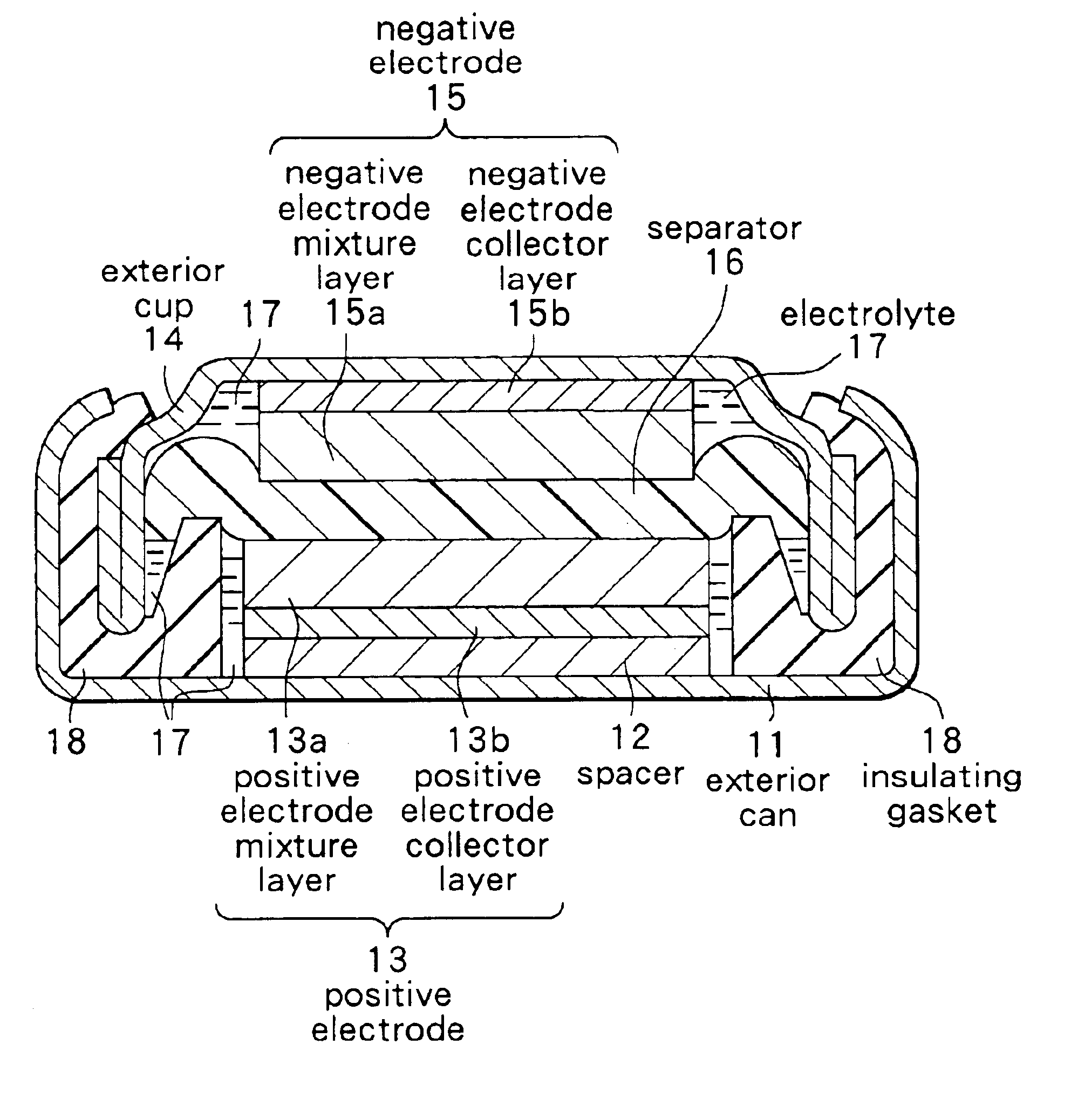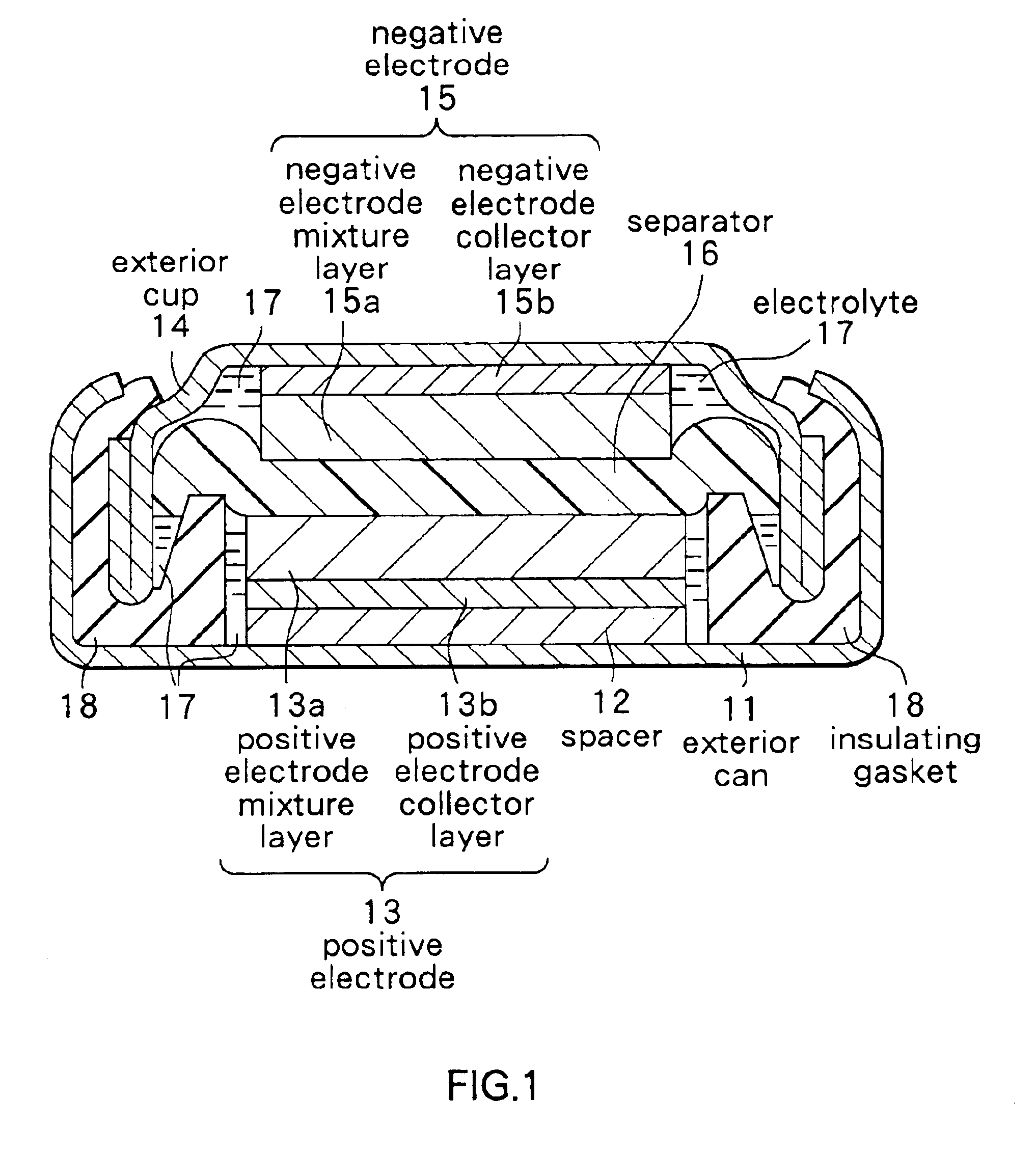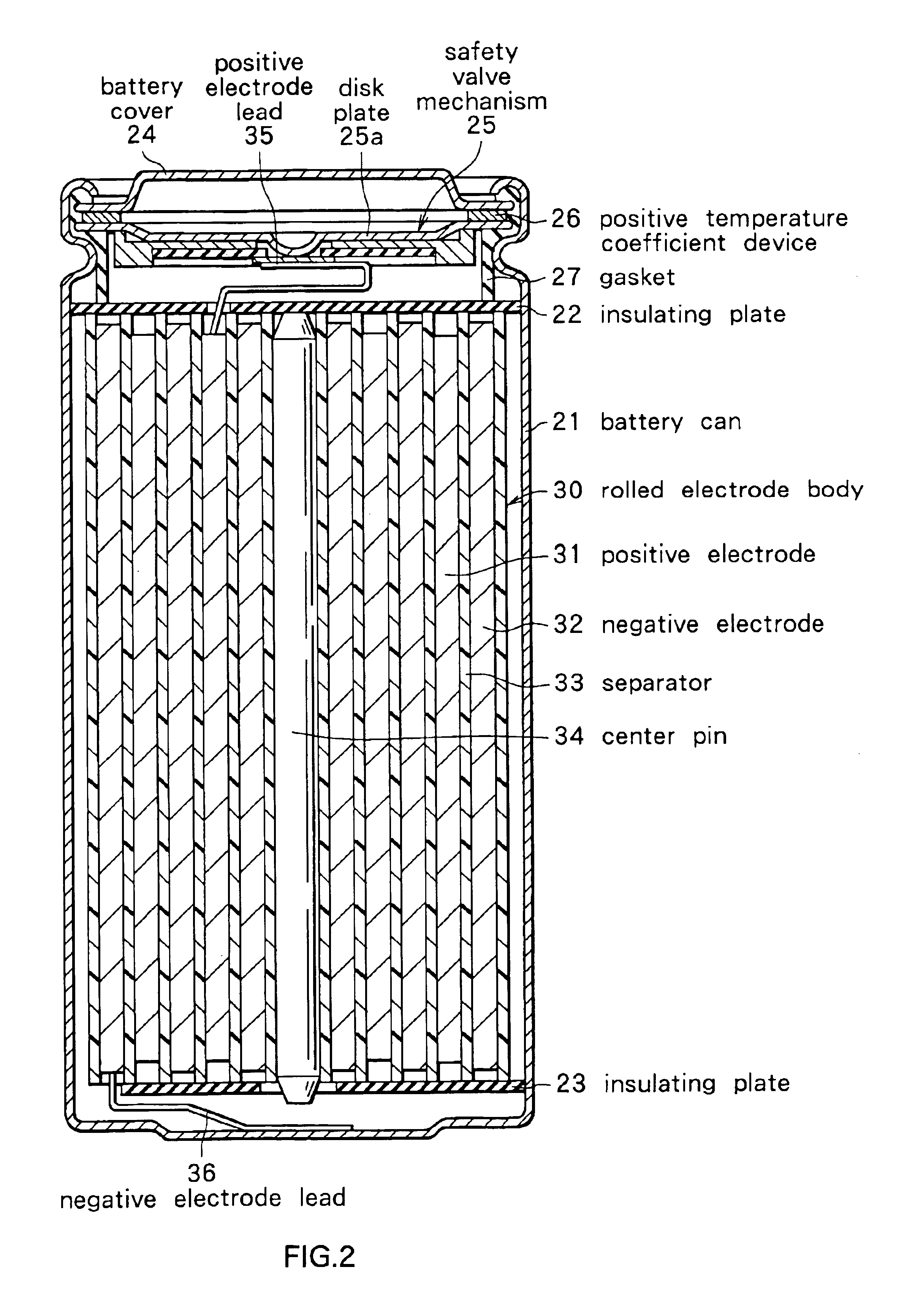Secondary battery
a secondary battery and lithium-ion battery technology, applied in secondary cell servicing/maintenance, non-aqueous electrolyte cells, cell components, etc., can solve the problems of low charging/discharging efficiency of lithium-ion secondary batteries, insufficient charging/discharging cycle characteristics, and noticeable problems
- Summary
- Abstract
- Description
- Claims
- Application Information
AI Technical Summary
Problems solved by technology
Method used
Image
Examples
first embodiment
[First Embodiment]
[0028]FIG. 1 shows the cross sectional configuration of a secondary battery according to a first embodiment of the invention. The secondary battery shown in FIG. 1 is what we call a coin-type. The secondary battery is formed by stacking a circular-plate positive electrode 13 enclosed in an exterior can 11 via a spacer 12 and a circular-plate negative electrode 15 enclosed in an exterior cup 14 with a separator 16 interposed therebetween. Inside the exterior can 11 and the exterior cup 14 are filled with an electrolyte which is an aqueous electrolyte, and peripheral edges of the exterior can 11 and the exterior cup 14 are sealed by caulking with an insulating gasket 18 in between.
[0029]The exterior can 11 and the exterior cup 14 are formed of, for example, iron (Fe) whose surface is plated with nickel (Ni), respectively.
[0030]The spacer 12 is provided for adjusting the thickness of the battery and is made of, for example, copper (Cu).
[0031]The positive electrode 13 ...
first modification
[First Modification]
[0090]The above-mentioned first embodiment has been described by exemplifying a coin-type secondary battery. However, the invention can be also applied to secondary batteries having other shapes such as a button-type, a paper-type, a cylindrical-type having a spiral structure inside, or a square-type.
[0091]FIG. 2 shows the cross-sectional configuration of a so-called cylindrical-type secondary battery. The secondary battery comprises a rolled electrode body 30 obtained by rolling a band-shaped positive electrode 31 and negative electrode 32 with a separator 33 interposed therebetween in a battery can 21 having a substantially hollow cylindrical column shape. The battery can 21 is made of, for example, iron (Fe) plated with nickel (Ni). One end of the battery can 21 is closed and the other end is open. A pair of insulating plates 22 and 23 are placed inside the battery can 21 vertical to the peripheral face of the roll so as to sandwich the rolled electrode body 3...
second modification
[Second Modification]
[0095]In the above-mentioned first embodiment, the secondary battery using the aqueous electrolyte which is an electrolyte in a state of liquid has been described. However, a solid electrolyte may be used instead of using the aqueous electrolyte. Thereby, the same or the better effects as those of the first embodiment can be obtained. Examples of the solid electrolytes are an organic solid electrolyte in which electrolyte salt is dissolved in a polymer compound, and a gel electrolyte in which an aqueous electrolyte (e.g., non-aqueous solvent and electrolyte salt) is dispersed or held in a polymer compound.
[0096]Examples of polymer compounds are ether polymer compounds such as a polyethylene oxide or a cross-link polyethylene oxide, ester polymer such as polymethacrylate, acrylate polymer compound, and fluorine polymer compound such as polyvinylidene fluororide or co-polymer of polyvinylidene fluororide and hexafluoropropylene. One of these alone or two and more ...
PUM
| Property | Measurement | Unit |
|---|---|---|
| open circuit voltage | aaaaa | aaaaa |
| open circuit voltage | aaaaa | aaaaa |
| charging capacity | aaaaa | aaaaa |
Abstract
Description
Claims
Application Information
 Login to View More
Login to View More - R&D
- Intellectual Property
- Life Sciences
- Materials
- Tech Scout
- Unparalleled Data Quality
- Higher Quality Content
- 60% Fewer Hallucinations
Browse by: Latest US Patents, China's latest patents, Technical Efficacy Thesaurus, Application Domain, Technology Topic, Popular Technical Reports.
© 2025 PatSnap. All rights reserved.Legal|Privacy policy|Modern Slavery Act Transparency Statement|Sitemap|About US| Contact US: help@patsnap.com



